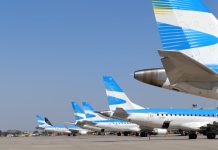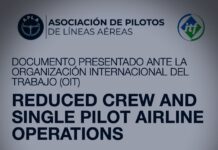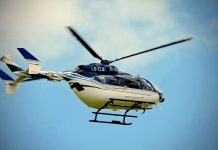Home
Secretarías
Secretaría de Seguridad RESAs that meet ICAO recommendations needed… and needed NOW
RESAs that meet ICAO recommendations needed… and needed NOW
Runway excursions and overruns account for around one quarter of incidents/accidents in air transport operations (24%).
According to incident and accident statistics these events occur, on average, at a rate of around one a week. Most of these instances lead to little more than minor damage to the aircraft with few, if any, injuries to passengers and crew. However when these events happen at airports with an insufficient area in the runway overrun the risk of major injuries and death for passengers, crews, airport staff and passers-by are dramatically increased. Recent cases have shown that in runway overrun events at airports lacking adequate runway end safety areas (RESA) the threat to life and limb is ‘clear & present’. In the first seven months of 2006 the cumulative death toll resulting from runway overruns was over 200.
Analysis of data from runway overrun events has shown that in the overwhelming majority of cases the aircraft leave the runway surface at a speed of less than 70kts and, furthermore, generally come to a final stop within 300m of the runway end.
Present ICAO requirements
In Annex14 to the Chicago Convention, ICAO lays down as part of the aerodrome design section its Standards and Recommendations for runway strips and runway end safety
areas.
At Code 3&4 runways (See fig 1) ICAO says that runways should be contained within a runway strip that is flat, firm and free of non-frangible obstructions. These runway strips must extend a minimum of 150m either side of the runway centreline and at least 60m beyond the end of the runway end (including any stopway). The width requirement is reduced to 75m at code 1&2 runways and the length requirement is dropped to 30m at non-instrument code 1 runways. (ICAO Annex 14 Vol 1 para 3.4 runway strips).
In addition to the runway strip requirements, Annex 14 demands that at code 3&4 runways a runway end safety area (RESA) which extends a minimum of 90m beyond the end of the runway strip and twice the width of the runway is established.
ICAO goes on to recommend that RESAs that extend 240m at code 3&4 runways and 120m at code 1&2 runways and equal to the graded portion of the runway strip are established.( Annex 14 Vol 1 para 3.5)
IFALPA Position
IFALPA believes that improvements in runway safety can best be achieved by avoiding runway related accidents and incidents. If, however, an accident occurs then additional runway safety measures already in place, could enhance survivability. One of these measures is safeguarding the runway environment.
Therefore IFALPA contends that the RESA dimensions laid out in Annex 14 Recommendations should be adopted as a Standard, in other words the minimum requirement. Data from past incidents and accidents has shown that in the overwhelming majority of cases aircraft overrunning a runway leave the paved surface at a speed of less than 70kts and come to a halt within 300m of the runway end and therefore it is clear that the risk of injury or death for passengers, crews and passers by is significantly mitigated by a RESA meeting these dimensions. IFALPA also recognises that at some airports it is impossible to establish an adequate RESA due to the location of the runway and the surrounding terrain and topography. In this case IFALPA believes that airports should install an Engineered Materials Arresting System (EMAS). An EMAS is an arrestor bed of crushable concrete blocks which works by transferring the energy from an overrunning aircraft into the action of crushing the concrete of the system. As a result, aircraft can be brought to a halt within the confines of the bed without injury to passengers or crew. Critically, an overrun into an EMAS will result in little or no damage to the aircraft and therefore the risk of a post overrun fire is dramatically reduced.
Accordingly, The Federation has been campaigning for many years for the RESA recommendation to be upgraded and enforced as an ICAO standard and further that the installation of an EMAS is recognised as equivilentto the 60m-240m RESA at space restricted airports.
Conclusion
While the ICAO recommended RESA has been applied at a number of airports, especially those constructed more recently, and an EMAS has been installed at a number of terrain/topographically challenged airports, it still remains a fact that hundreds of the world’s runways do not comply with the recommendation (or an EMAS alternative) and therefore the lives of passengers and crews are being needlessly exposed to risk.
IFALPA believes the ‘60+240’x twice runway width Recommendation be upgraded to a Standard forthwith. In a number of cases simple things and low cost items like filling in of ravines or culverts will provide the safety area we call for. Where the physical space does not exist then the solution to the problem has been developed and proven its worth in the real world. Accordingly, there is no excuse to delay the creation of adequate RESAs or, alternatively, the installation of an EMAS
















